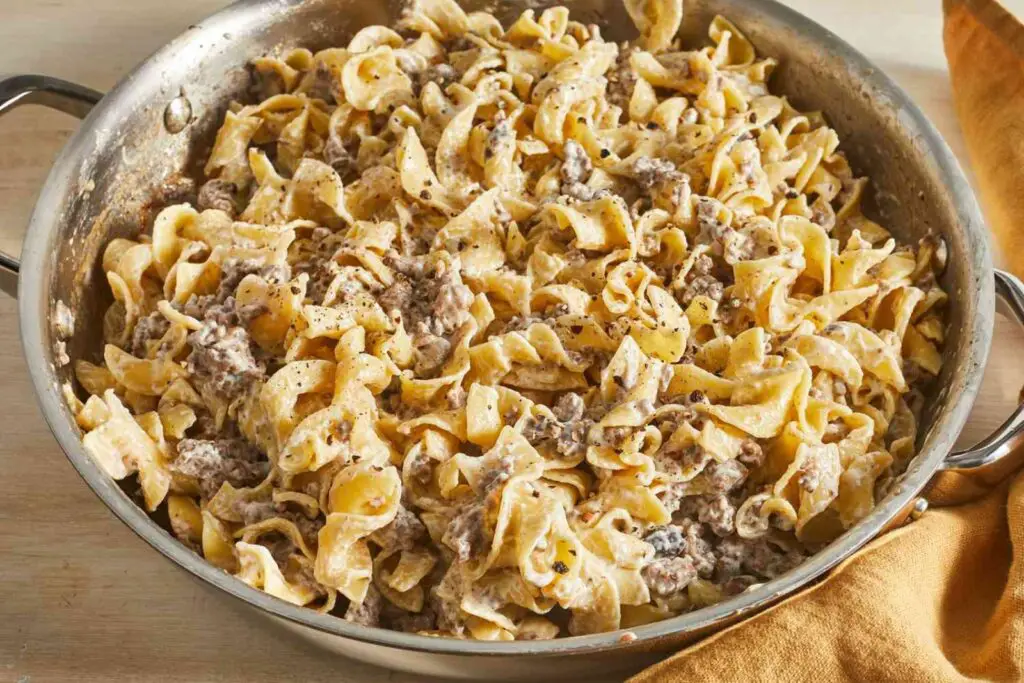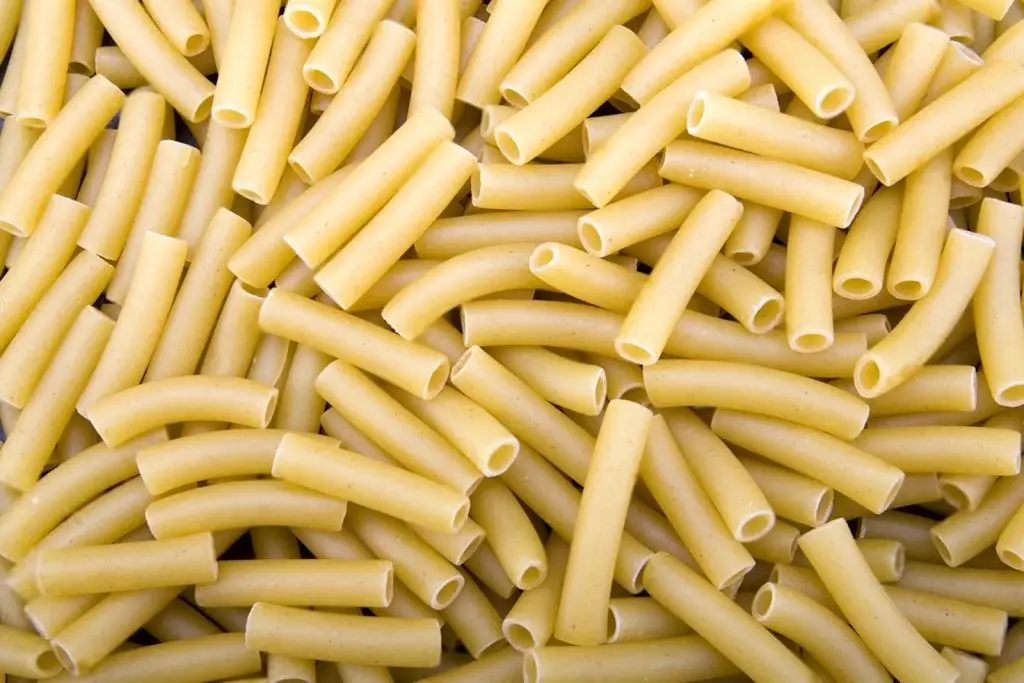
Patties, a delectable and versatile culinary delight, have earned their place as a beloved snack and meal option in various cuisines around the world. These savory treats come in various forms, from the classic meat patties like hamburger and kebab, to vegetable patties like potato and falafel, each offering a unique blend of flavors and textures. Patties are cherished for their portability, making them a popular choice for on-the-go meals or quick bites. Whether enjoyed as a satisfying snack, a hearty main course, or a delightful addition to salads and sandwiches, patties offer a delightful fusion of taste and convenience. However, when preparing patties in larger quantities or when enjoying the luxury of a variety of options, it may be challenging to consume them all before they lose their freshness or spoil. Freezing patties becomes a practical and efficient method to preserve their delightful taste and tender texture, ensuring that each patty remains ready to elevate your meals and snacks with its savory goodness, even when freshly made patties are not readily available or when you wish to enjoy a variety of patties at your convenience. In this guide, we will explore the best practices for freezing patties, allowing you to savor the richness of these delightful treats and elevate your culinary creations with the essence of perfectly frozen patties, without the need for a fresh preparation or frequent visits to your favorite eateries. Get ready to embrace the versatility of patties, with a freezer stocked with these savory delights that await to add a touch of culinary magic to your meals.
Here are the simple steps to freeze patties:
Step 1: Select your Fresh Patties
Selecting fresh patties is a crucial step in the process of freezing them. Whether you are using homemade patties or store-bought ones, ensuring their freshness and quality will have a significant impact on the taste and texture of the patties when you decide to thaw and cook them later on.
For homemade patties, start by choosing high-quality ingredients. Use fresh ground meat or vegetables and any other desired seasonings or binders according to your favorite recipe. This step is essential as the quality of the ingredients directly affects the overall taste of the patties.
If you are using store-bought patties, carefully inspect the packaging for any signs of damage, leaks, or discoloration. Check the expiration or “use by” date printed on the package to make sure the patties are still safe to eat and haven’t surpassed their shelf life. Avoid using patties that have been frozen and thawed multiple times, as this can compromise their taste and texture.
By starting with fresh and good-quality patties, you are setting the foundation for a successful freezing process. The fresher the patties, the better they will hold up during freezing and retain their flavor and juiciness when you eventually cook them. So, take the time to choose the best patties possible before proceeding to the next steps of the freezing process.
Step 2: Arrange the Patties for Freezing
Once you have selected fresh and good-quality patties, the next step is to arrange them properly on a baking sheet or tray for freezing. Proper arrangement is essential to ensure that the patties freeze individually and do not stick together, making it easier for you to retrieve individual patties from the freezer whenever you need them.
To arrange the patties, follow these steps:
- Prepare a baking sheet or tray: Choose a flat and clean baking sheet or tray that will fit inside your freezer. You can line it with parchment paper or wax paper to prevent the patties from sticking to the surface.
- Create a single layer: Place the patties on the baking sheet or tray in a single layer. Make sure they are evenly spaced and not touching each other. Leaving some space between the patties ensures that they freeze separately and maintain their individual shapes.
- Consider using parchment paper: If you are freezing a large batch of patties or if you want to stack multiple layers, consider placing a sheet of parchment paper between the layers to prevent sticking. This will make it easier to remove a single patty without disrupting the rest.
By arranging the patties in a single layer on a baking sheet or tray, you are setting them up for successful freezing. The individual freezing of each patty ensures that they won’t clump together, making it convenient for you to take out only the desired amount of patties when you want to cook them. Properly arranged patties will also help you avoid any waste and keep the freezing process efficient and organized.
Step 3: Pre-Freeze the Patties
After arranging the patties in a single layer on a baking sheet or tray, the next step is to pre-freeze them before final packaging. Pre-freezing, also known as flash-freezing, is an essential technique that helps ensure the patties maintain their shape and integrity during long-term freezing. This step is particularly useful when dealing with delicate or soft patties that might get easily deformed if directly placed in freezer bags or containers.
Here’s why pre-freezing the patties is important:
- Shape preservation: When patties are pre-frozen, the outer layer of the meat or ingredients solidifies quickly, helping to retain the shape of the patty. This prevents them from sticking together or getting squished when stored in containers or freezer bags.
- Convenience: By pre-freezing the patties individually on a baking sheet or tray, you can easily remove individual patties whenever you need them. This prevents the need to thaw the entire batch just to get one or two patties.
- Prevents freezer burn: Pre-freezing reduces the chances of freezer burn, which can occur when air comes into contact with the patties. By flash-freezing the patties, you minimize the formation of ice crystals and help maintain their overall quality.
How to pre-freeze the patties:
- Take the baking sheet or tray with the arranged patties and place it in the freezer on a flat surface where the patties won’t be disturbed.
- Allow the patties to pre-freeze for about 1 to 2 hours, depending on their size and thickness. Larger patties may require more time to solidify properly.
- Once the patties are pre-frozen and no longer soft to the touch, they are ready for final packaging.
After pre-freezing, you can proceed to package the patties individually with plastic wrap, aluminum foil, or parchment paper to prevent them from sticking together. Alternatively, you can place them in a freezer-safe container or resealable freezer bags, making sure to remove any excess air to minimize the risk of freezer burn.
Step 4: Package the Patties
After pre-freezing the patties, it’s time to proceed with the packaging step. Proper packaging is crucial for maintaining the quality and flavor of the patties during their time in the freezer. Packaging the patties individually or with appropriate barriers helps prevent freezer burn and ensures that the patties remain separated, avoiding any potential flavor cross-contamination.
Here’s why packaging the patties is important:
- Freezer burn prevention: Freezer burn occurs when the surface of frozen food is exposed to air, causing moisture to evaporate and leaving behind dry and discolored patches. By individually wrapping each patty or using airtight containers, you create a protective barrier that reduces air exposure and minimizes the risk of freezer burn.
- Odor absorption prevention: Proper packaging helps prevent patties from absorbing other odors in the freezer. If patties are not well-sealed, they may take on the flavors of nearby items, affecting their taste when cooked.
How to package the patties:
- Take the pre-frozen patties out of the freezer and place them on a clean, flat surface.
- Individually wrap each patty: Use plastic wrap or aluminum foil to wrap each patty individually. Make sure to cover the patties completely and seal the wrapping tightly to keep out air and moisture.
- Use parchment paper separators: If you prefer to stack the wrapped patties in a container, consider placing parchment paper between each patty. This prevents them from sticking together and makes it easier to remove individual patties when needed.
- Opt for freezer-safe containers: Alternatively, you can use airtight, freezer-safe containers to store the wrapped patties. Ensure the containers are of the right size to accommodate the patties without unnecessary air space.
Step 5: Seal and Label the Packages
Sealing and labeling the packages of frozen patties is a crucial step in the freezing process. Properly sealing the packages ensures that the patties remain fresh and free from exposure to air, while labeling allows you to keep track of important information such as the type of patties and the date of freezing.
Here’s why sealing and labeling the packages is important:
- Freshness preservation: By securely sealing each wrapped patty, you create a protective barrier that prevents air and moisture from reaching the patties. This helps maintain their freshness and texture, reducing the risk of freezer burn and maintaining their quality over time.
- Avoiding cross-contamination: A well-sealed package prevents the patties from absorbing odors from other items in the freezer, preserving their original flavors.
- Storage management: Labeling each package with the type of patties and the date of freezing allows you to keep track of what’s inside and when they were frozen. This is particularly useful if you have different types of patties or if you freeze them at different times. It enables you to use the oldest patties first, ensuring none go to waste due to long-term storage.
How to seal and label the packages:
- Check the wrapping: Ensure that each patty is wrapped individually with plastic wrap, aluminum foil, or parchment paper. If you are using airtight containers, make sure the lids are tightly closed.
- Eliminate excess air: When using plastic wrap or foil, press out any excess air from the package before sealing it. Reducing the amount of air inside the package helps minimize the risk of freezer burn.
- Label the packages: Using a marker or freezer-safe label, write down the type of patties on each package. For example, you might specify “Beef Patties” or “Vegetarian Patties.” Additionally, include the date of freezing. This can be as simple as the month and year (e.g., “Aug 2023”) or more specific if you prefer.
- Place packages in an organized manner: Once sealed and labeled, stack the packages neatly in the freezer. If you are using containers, ensure they are stacked securely and efficiently to make the most of the freezer space.
Step 6: Store in the Freezer
Storing the wrapped and labeled patties properly in the freezer is the final step of the freezing process. Proper storage ensures that the patties remain fresh, avoid freezer burn, and are easily accessible whenever you want to cook them. Organizing the freezer with proper placement and rotation practices further enhances the efficiency of your frozen patty storage.
Here’s why storing the patties in the freezer is important:
- Prevent freezer burn: Placing the wrapped patties in a freezer-safe container or resealable freezer bags helps create a protective barrier that reduces air exposure, minimizing the risk of freezer burn. Freezer burn can affect the texture and taste of the patties, leading to a less enjoyable eating experience.
- Easy identification: By labeling each package with the type of patties and the date of freezing, you can easily identify and access the patties when you need them. This labeling system allows you to use the oldest patties first, reducing food waste and ensuring you consume them within their optimal storage time.
- Efficient use of space: Using freezer-safe containers or bags and removing excess air before sealing helps maximize freezer space. Properly organized patties allow you to fit more items in the freezer and avoid overcrowding, which can affect the overall performance of the freezer.
How to store the patties in the freezer:
- Place the wrapped and labeled patties inside a freezer-safe container or resealable freezer bags. If using bags, press out any excess air before sealing to minimize the risk of freezer burn.
- Organize the freezer: Find an appropriate spot in the freezer where the temperature remains consistent. Ideally, place the patties on a flat surface to ensure they freeze evenly.
- Utilize the FIFO method: When organizing the patties, practice the “first in, first out” (FIFO) method. Put the newest packages at the back of the freezer and the oldest ones in front. This way, you will use the older patties first, ensuring that none go past their optimal storage time.
- Avoid overcrowding: Be mindful of how you stack and arrange the patties. Leave enough space between packages to allow air to circulate freely and maintain a consistent temperature throughout the freezer.
How long can patties last in the freezer?
Patties can last in the freezer for 1 to 3 months without a significant loss in quality. However, for the best taste and texture, it’s recommended to consume them within the first month of freezing. Properly stored and labeled patties can still be safe to eat after 3 months, but their quality may deteriorate over time.
Other related questions
How do you defrost patties?
To defrost patties safely, use one of the following methods: Refrigerator: Place the wrapped patties on a plate in the refrigerator and allow them to thaw slowly. Cold-water bath: Submerge the patties in a sealed plastic bag in cold water, changing the water every 30 minutes until thawed. Microwave: Use the defrost setting on the microwave, but cook immediately after thawing to prevent bacterial growth.
Can you refreeze patties?
Refreezing patties is generally not recommended due to food safety concerns. Once patties have been thawed, bacteria may have multiplied, and refreezing can lead to further bacterial growth and potential foodborne illness. It’s best to cook and consume thawed patties immediately or discard any leftovers to ensure food safety.
How do I know if the patties have gone bad after being frozen?
To determine if frozen patties have gone bad, look for signs such as an off smell, discoloration, or freezer burn. If the patties have an unusual odor or appear slimy or discolored, they may no longer be safe to eat. Additionally, if they have been in the freezer for an extended period beyond their recommended storage time, their quality may have significantly deteriorated, affecting taste and texture. When in doubt, it’s best to err on the side of caution and discard any patties that show signs of spoilage.
Can you freeze patties that have already been cooked with cheese or other meltable toppings?
Yes, you can freeze patties that have already been cooked with cheese or other meltable toppings. To do so, ensure the patties are completely cooled before wrapping them tightly in plastic wrap or aluminum foil. Place them in an airtight container or freezer bag, removing as much air as possible to prevent freezer burn, and label with the date for easy identification. When reheating, thaw the patties in the refrigerator overnight and use an oven or microwave to retain their texture and flavor.
Can you freeze patties with sauce or marinade, or is it better to add them after thawing?
Yes, you can freeze patties with sauce or marinade, but it’s often better to add them after thawing. Freezing patties with liquid-based toppings can lead to texture and flavor changes. To preserve the patties’ quality, freeze them without the sauce, and add the sauce or marinade after thawing during the reheating process.
Can you freeze vegan or vegetarian patties, and do the freezing steps differ?
Yes, you can freeze vegan or vegetarian patties, and the freezing steps are generally similar to freezing meat-based patties. Ensure the patties are fully cooled before packaging them in an airtight container or freezer bag. To prevent sticking, consider separating individual patties with parchment paper or plastic wrap. Thaw in the refrigerator before cooking for best results.








